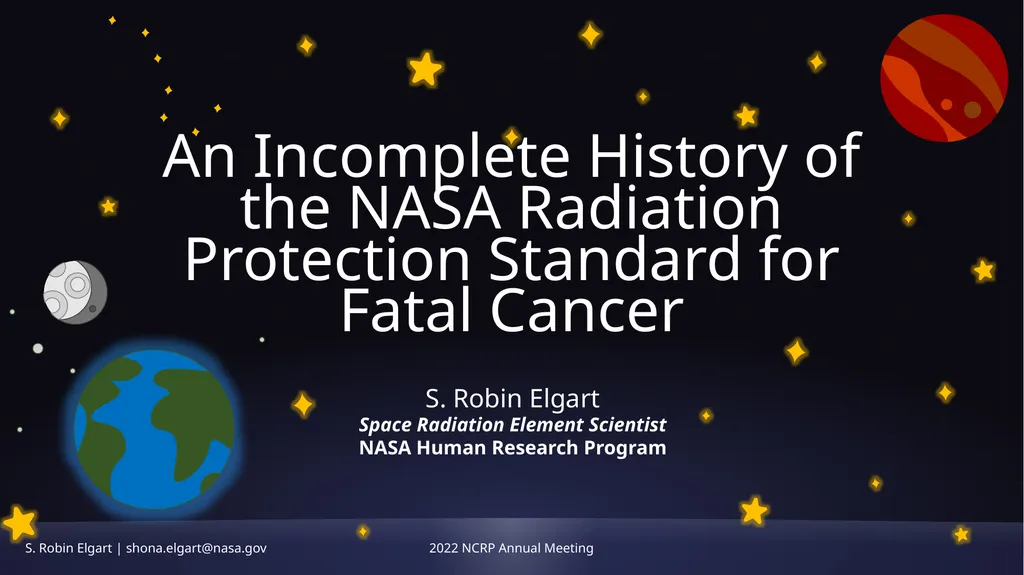
Author : celsa-spraggs | Published Date : 2025-08-08
Description: An Incomplete History of the NASA Radiation Protection Standard for Fatal Cancer S. Robin Elgart Space Radiation Element Scientist NASA Human Research Program Overview Introduction Coevolution of Radiation Risk Recommendations and NASADownload Presentation The PPT/PDF document "" is the property of its rightful owner. Permission is granted to download and print the materials on this website for personal, non-commercial use only, and to display it on your personal computer provided you do not modify the materials and that you retain all copyright notices contained in the materials. By downloading content from our website, you accept the terms of this agreement.
Here is the link to download the presentation.
"An Incomplete History of the NASA Radiation"The content belongs to its owner. You may download and print it for personal use, without modification, and keep all copyright notices. By downloading, you agree to these terms.













